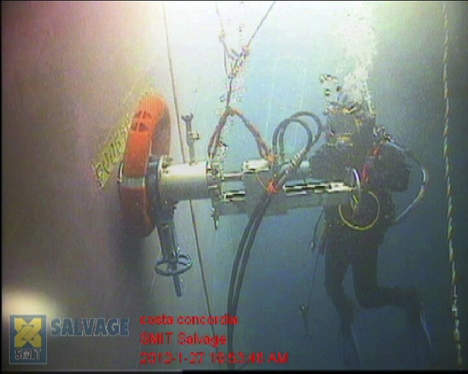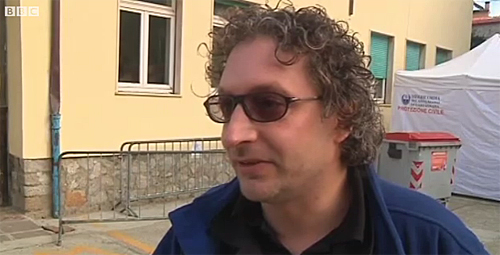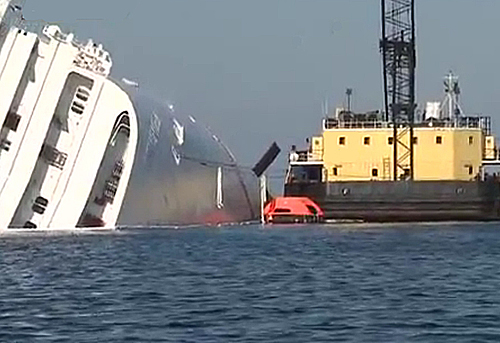Rough seas prevents Smit-Neri salavage team to start defueling Costa Concordia
The Dutch-Italian salvage team of Smit Salvage and Fratelli Neri had installed two of the six forward fuel tanks with a sealed flange and were ready to pump out the fuel.
However rough seas prevented them to start defueling the half-sunk cruise ship Coast Concordia off the Italian coast. This was announced at the press conference on Saturday January 28th on the island Giglio.
Technical briefing at press conference
At a press conference Smit Salvage and Fratelli Neri provided a technical briefing on the oil removal operation. The team was preparing the four remaining tanks.
Together the forward tanks are estimated to hold approximately two thirds of the (intermediate) fuel oil in the casualty.

A diver places the first flange against the hull of the Costa Concordia.
Water in, oil out
The divers had already drilled into four of the six outer tanks and fixed valves on them: one on top, one on bottom. Later on hoses will then be attached to the valves and as the oil is sucked out of the upper hose, sea water is pumped in to fill the vacuum via the lower hose.
Low temperature of heavy fuel oil
In an interview with BBC salvage manager Bart Huizing of Smit explains that the low temperature of the heavy fuel oil akes the operation more difficult and he expects that they shal have to heat up the oil before it can be pumped up.

See the interview with Bart Huizing on the BBC-website.
Start first
Huizing: "This makes it difficult for us to predict at what rate we can pump. We need to start first", said Huizing. "We don't see a big risk in an oil spill but if weather deteriorates nobody can tell what the vessel will do."
Waiting for better weather
Later that day Smit Salvage had to disconnect the crane barge Melori from the cruise ship and brought into the protective port of the island Giglio. Officials said the conditions might keep them from resuming work until midweek.
More information
Smit Salvage/Boskalis
Rotterdam, the Netherlands
+31 10 454 99 11
www.smit.com




